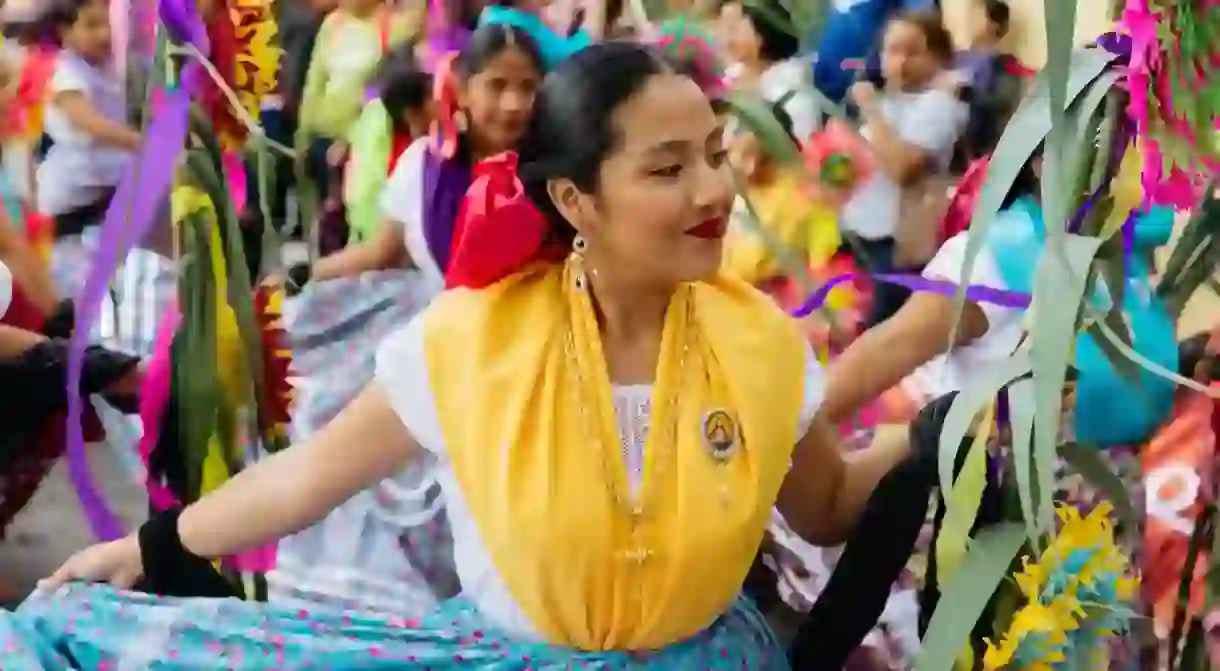Oaxaca’s Guelaguetza Festival Should Be on Everyone’s Bucket List

The Guelaguetza, Oaxaca’s impressive and expansive indigenous dance, culture and culinary celebration is one that should be on everybody’s Mexico bucket list. And quite frankly, as a coming together of cultures, costumes and tradition, it’s really the only place to be this summer in Mexico.
The History of the Guelaguetza
The Guelaguetza festival in Oaxaca predates the arrival of the Spanish quite significantly, proving its historical and cultural importance for the large indigenous population of Oaxaca State. Its name is overtly indigenous in origin too, coming from the Zapotec, which loosely translated means ‘reciprocal exchange of gifts and services’.



However, the Guelaguetza has significantly modernised and changed over the years. Previously, it was more closely associated with religious celebrations honouring Centéotl, the goddess of maize, which were said to ensure a bountiful harvest. In fact, to this day people from across Oaxaca gather in the Jardín del Pañuelito to elect a local woman from one of the eight areas participating in the festivities, who will play the role of Centéotl for the duration of that year’s Guelaguetza.




With the arrival of the Spanish, the Guelaguetza saw the addition and inclusion of many Christian elements. As such, human sacrifice was out and the Virgen del Carmen was in. In the past century, the Guelaguetza has expanded and diversified though, incorporating the traditions of peoples from eight distinct regions across the State of Oaxaca (Los Valles Centrales, La Sierra Juárez, La Cañada, Papaloapan, La Mixteca, La Costa, La Sierra Sur and the Istmo de Tehuantepec) and displaying their unique dances, dress and traditions.





What is the Guelaguetza?
Sometimes known as Los Lunes del Cerro (Mondays on the Hill), Oaxaca City’s hugely important Guelaguetza celebration is one of the biggest indigenous cultural events in the Mexican calendar. While it is now a massive tourist attraction (a fact not free from controversy amongst the locals), it is also a key piece of the puzzle which ensures the survival of indigenous groups and traditions.


Dancing is the primary draw of the celebration, as groups dressed in the vibrant, traditional costumes of Mexico’s indigenous communities come together to showcase their fleet-footed talents and rich cultural heritage, before throwing gifts from their respective regions to the crowd.


However, dance isn’t the only appeal of the Guelaguetza, as typical foods of the region are also served up, there’s an annual mezcal fair and plenty of artisanal crafts are displayed and sold in the city centre and beyond. Plus, the traditional dress worn by the dancers and many attendees, often adorned with heavy embroidery and colourful ribbons, is truly something to behold.

When and Where is the Guelaguetza?
The Guelaguetza takes place principally in Oaxaca City, as well as some of the smaller surrounding villages, on the two Mondays following July 16th each year, starting at 10am. The only exception to this is if July 18th, the date on which Mexico’s only indigenous president Benito Juárez passed away, falls on a Monday, in which case the Guelaguetza schedule is pushed back by a week.



Each ‘Monday on the Hill’ is held at the purpose-built Auditorio Guelaguetza amphitheatre, on the Cerro del Fortín, Oaxaca City. The morning is dedicated to traditional dance shows, whereas the afternoon sees the Ballet Folklórico de Oaxaca re-enact the legend of the Princesa Donají, the last Zapotec princess.


If you can’t make it to the city centre though, you can see local versions of the main Guelaguetza in many of Oaxaca’s smaller villages, such as Cuilapan.
















